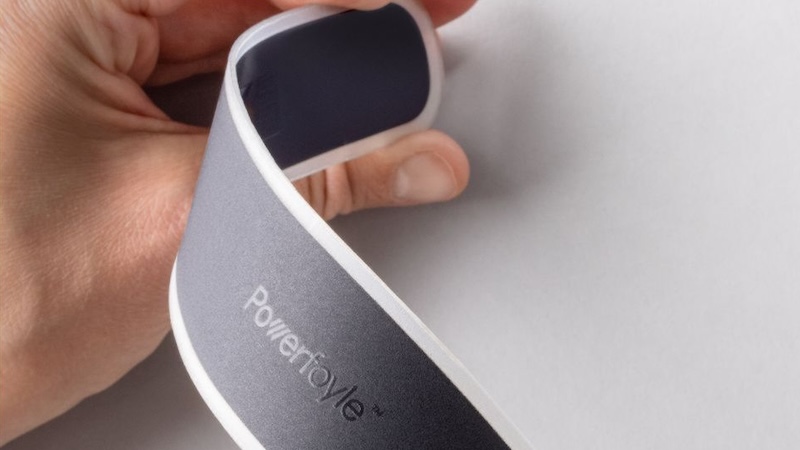Charging electrical devices without cables: This is what a Swedish company promised with the help of an internal solar cell that does not even depend on the sun. Charging cables should become unnecessary.
Power from any light source: This is what a Swedish company's invention is supposed to do. Sure enough, Exeger's so-called Powerfoyle doesn't even need the sun. The internal solar cell is flexible and can charge electronic devices such as headphones, keyboards, and smart home gadgets – without cables.
Charging without cables: This is how Powerfoyle works
This technology relies on artificial photosynthesis processes to convert light energy into electricity. According to the manufacturer, the solar cell does not necessarily depend on direct sunlight. Diffuse light, such as light from a candle or from indoor lighting, is also suitable.
It was precisely due to the lack of light in Sweden during the winter months that founder Giovanni Felli came up with the idea to further develop solar technology. “Like algae at the bottom of the ocean, where it's almost completely dark, we can use very few photons efficiently,” he explains. The Independent. Its mission is to meet global energy needs and some of the biggest environmental challenges facing the planet.
“Powerfoyle is a solar cell that can be integrated into consumer electronic devices to provide them with endless clean energy,” the company wrote on the website. Product page Solar film. It differs from traditional glass-covered panels because it does not require conductive paths. It is also insensitive to partial shading, which usually significantly reduces the efficiency of PV modules.
The Swedish startup continues to develop indoor solar cells
Solar cells for indoor use have already been around for decades. For example, solar-powered calculators were introduced in the 1970s. In 1988, researchers at the University of California at Berkeley in California developed a low-cost, high-efficiency dye-sensitized solar cell that was semi-flexible and semi-transparent.
More than 20 years later, Henrik Lindström, co-founder of Fili and Exeger, used this technology to develop a new electrode material that promised 1,000 times better conductivity. It is the basis of the Powerfoyle cell, which is now produced on a commercial scale.
Charging without cables: The solar cell is already built into these devices
already exists December 2023 Exiger received a loan of €35 million from the European Investment Bank (EIB). The funds will be used to expand production to meet ongoing demand. The Swedish clean technology startup is supposed to be able to produce up to 2.5 million square meters of patented solar cells annually.
So far, the Swedes have managed to incorporate their invention into seven commercially available products, including headphones, wireless speakers and a bicycle helmet. Six others are in follow-up. Exiger's clients include Adidas, Phillips, Urbanista and 3M. high independent The startup is also in talks with LogiTech and Apple.
However, Fili and his team are not the only ones working on developing indoor solar cells. American company Ambient photonics According to its own information, it offers “the most powerful indoor solar cell in the world.” If the technology finds its way into homes around the world, it could significantly help reduce electronic waste. For example, it is estimated that about 3.1 billion disposable batteries end up in the trash each year.
Currently, Exeger's solar film can only power smaller devices. More energy-intensive items such as laptops and smartphones are excluded initially. However, the Swedish company is already looking at a solar-powered tablet case that will provide so much power that users will rarely have to charge it. Philly wants to change the world of technology with his product: “Our grandchildren will laugh because we had cables.”
It is also interesting:

“Certified tv guru. Reader. Professional writer. Avid introvert. Extreme pop culture buff.”






More Stories
AI-powered traffic lights are now being tested in this city in Baden-Württemberg.
The use of artificial intelligence in companies has quadrupled
AI Startup: Here Are Eight Startup Ideas